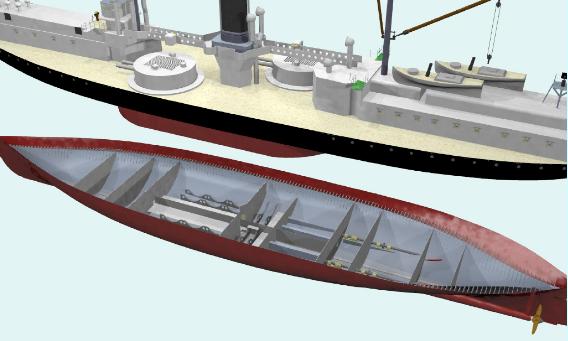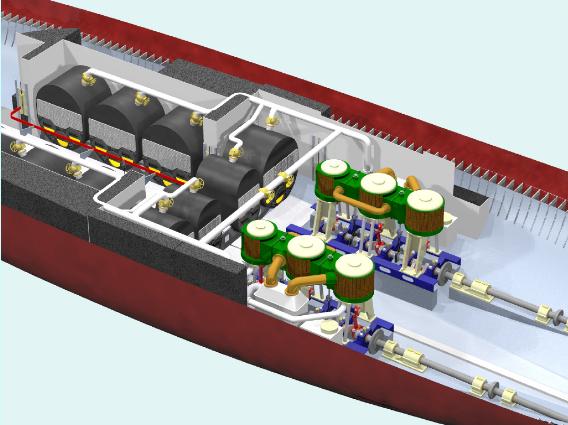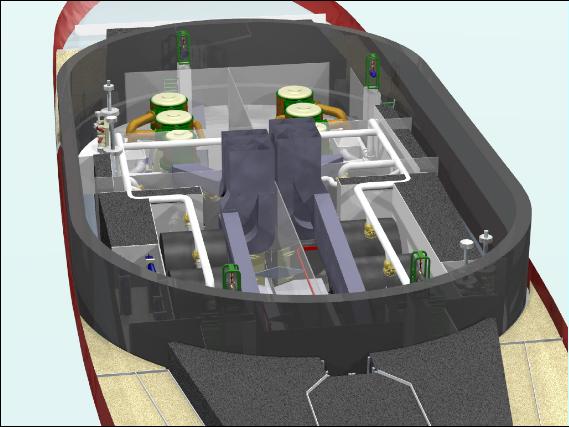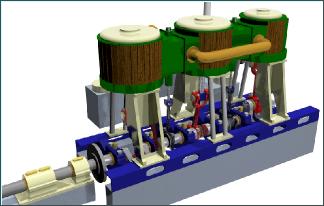| Home | Wiki | Docs | Sources | Contact |

| PROTECTION OF THE VITALS |  |  |
This section looks at the ‘vital’ elements of HMS Colossus – the items that must be protected from enemy gunfire if the ship is to remain an effective fighting unit.
|
A ship's protection scheme must ensure that it can resist damage sufficiently to permit it to Float, Move and Fight.
"Float"Colossus was designed as a central armoured citadel box with a watertight raft extending forward and aft protected by a 3 inch armoured deck lying a few feet below the waterline. At the ranges these ships were expected to fight (about 1,000 yards), gunfire trajectories were almost horizontal, so shells hitting the water would explode or be retarded before doing much damage below the waterline.
The spaces above the armoured deck were filled with stores, coal etc., and wing compartments were filled with cork. The intention here was that if the unarmoured ends were penetrated, not much water would be able to flow in, as the spaces would already be full and the ship will remain buoyant and stable.
Colossus's hull featured a double bottom for strength, rigidity and to minimise the risk of flooding. Bulkheads divided the ship into watertight compartments, although there were many watertight doors between compartments, and these were not always effective or quick to close (as was the problem when HM S Victoria was rammed and sunk by HMS Camperdown in 1893). |


|
|
|
Just forward of the engine spaces were the 4 boiler rooms. Their 8 main and 2 auxiliary elliptical boilers operated at a working pressure of 64 pounds on the square inch. The main boilers each had three grates, the auxiliary boilers two. Coal bunkers were situated outboard of the boilers and engines, offering a little added protection while being near where it would be needed. |
 |
|
 |  | ||
| (c) 2008 Rob Brassington, all rights reserved | |||


